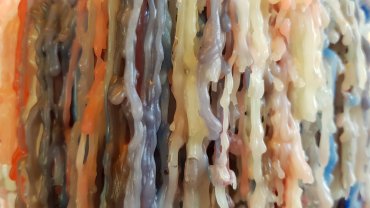
As the trade war between Washington and Beijing continues, the United States paraffin-based wax industry is feeling pressure as sales dip and alternative waxes gain a larger share of the market. Wax sellers and buyers worry that if the duties continue, they will burn the industry.
One wax buyer, who requested anonymity, said the paraffin industry is suffering heavily from cost increases of 15 to 25 percent.
“For a few months, companies had tried to keep prices at pre-tariff levels,” he said. “We cannot continue to eat the extra cost. Its a significant increase, so we have to pass it along to our customers.”
Since January 2019, the price of wax has climbed about $150 per ton, said a supplier. The costly duties are forcing paraffin suppliers to switch their attention to smaller buyers.
“Prior to the tariffs, the business market focused on rail-car-load customers, but since the tariffs, the focus is now on truck-load customers,” he said.
A representative for the National Candle Association predicted the duties will not burn out anytime soon. Colton La Zar said tariff information changes rapidly. “The tariffs could remain in place for another ten months,” he guessed. “Information changes daily; we don’t know what to expect.”
Under the current tariffs, paraffin wax with more than 0.75 percent oil is taxed at 25 percent, while wax with less than 0.75 percent oil is taxed at 15 percent, said La Zar. Paraffin wax is not among the items included on the Phase I tariff roll-back list the White House released in mid-January.
Washington delivered three rounds of tariffs in 2018 and a fourth in September 2019. In August 2018, along with other industries, the National Candle Association tried to alert Washington to the adverse effects duties would have on the paraffin wax industry by testifying before the U.S. International Trade Commission. In the end, wax with less than 0.75 percent oil was removed from a list of proposed tariffs, but not wax with more than 0.75 percent oil, said La Zar. Then in September, wax with more than 0.75 percent oil was added to a list of items subjected to tariffs, he said.
Reacting to tariffs on wax and related products, Chinese Group I base oil refineries scaled back production, two sources confirmed. Paraffin wax is a byproduct from API Group I base oil production. The same supplier mentioned earlier in this story said Chinas cutback was an eye opener for buyers, who began to search for alternative options to paraffin wax. Demand is still strong for a product used in everything from candles to produce boxes to spa treatments.
Currently, three different types of alternative waxes are trimming the wick of the paraffin wax industry, but they come with challenges ranging from cost to ecological damage: soy, which is more expensive than Group I waxes; palm, which is partially responsible for deforestation in Indonesia; and tallow, which is the most popular alternative, the supplier explained.
“We’re seeing an increase in competition from certain sectors we haven’t seen in the past,” the supplier said. La Zar, with the candle trade group, agreed. “In the past year, I’ve seen an increase in non-paraffin candle usage. More than likely, the tariffs will increase their popularity even more.”
About half the wax volume in Mexico and Latin America goes toward candles. The supplier said that in the U.S. and Canada, about 30 percent goes into corrugated boxes, 30 percent candles, 30 percent adhesives and the remainder goes towards industrial application, such as CVP lubricants and flexible packaging.